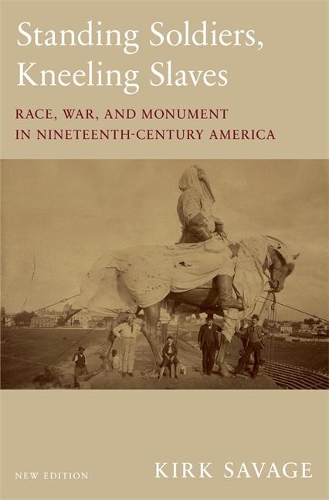
Standing Soldiers, Kneeling Slaves: Race, War, and Monument in Nineteenth-Century America, New Edition
(Paperback, 2nd edition)
Publishing Details
Standing Soldiers, Kneeling Slaves: Race, War, and Monument in Nineteenth-Century America, New Edition
By (Author) Kirk Savage
Princeton University Press
Princeton University Press
9th October 2018
2nd edition
United States
Classifications
Professional and Scholarly
Non Fiction
History of the Americas
Architecture: public, commercial and industrial buildings
History of art
Slavery, enslaved persons and abolition of slavery
973.5
Physical Properties
Paperback
296
Width 155mm, Height 235mm
Description
The United States began as a slave society, holding millions of Africans and their descendants in bondage, and remained so until a civil war took the lives of a half million soldiers, some once slaves themselves. Standing Soldiers, Kneeling Slaves explores how the history of slavery and its violent end was told in public spaces-specifically in the
Reviews
"In a fascinating study of public space and the less-than-public contradictions of nineteenth-century culture, Kirk Savage sheds light not only on memory and monument but also on the invention of the 'popular' itself." Henry Louis Gates, Jr.
"A richly detailed and engagingly written study." Boston Globe
"Kirk Savage shows ingenuity in his analysis and interpretation of post-war commemorative sculpture." Times Literary Supplement
"An important and innovative work that will surely gain a wide scholarly audience . . . My hope is that it will also gain the wider readership its message deserves among the civic leaders who shape public policy and the general citizenry who both inherit and build the public monuments that guide public memory. Though the story Savage traces is often a discouraging one, his message is ultimately hopeful. By understanding how we have defined our past and our present through the lasting medium of public sculpture, we can imagine how we can shape, and perhaps redeem our future." Catherine W. Bishir, Journal of the Society of Architectural Historians
"[A] tour de force." Library Journal
Author Bio
Kirk Savage is the William S. Dietrich II Professor of History of Art and Architecture at the University of Pittsburgh. He is the author of Monument Wars: Washington D.C., the National Mall, and the Transformation of the Memorial Landscape (Princeton) and the editor of The Civil War in Art and Memory.
